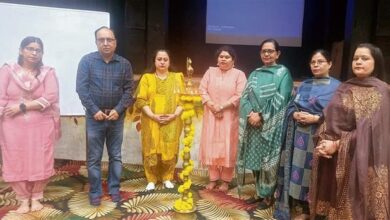A Decade of Cries and Comebacks: Jammu and Kashmir’s Modi Scandal
A sight that would reverberate through the corridors of power for years to come took place on the grounds of Jammu’s MA Stadium during one of the coldest winters in history.

With a clamor that prepared the audience for the BJP’s spectacular comeback to power in the 2014 general elections, Narendra Modi, the chief minister of Gujarat at the time and the party’s nominee for prime minister, entered the stadium. A “Lalkar Rally” was held, and it was a call to action that rocked the political establishment.
The renowned orator Modi yelled instead than just spoke. His remarks sliced through the seven decades’ worth of political spin that had clouded the situation around Jammu and Kashmir. His words were eagerly awaited by the sea of expectant faces in the audience as he untangled the intricate web of emotions entwined throughout the history of the former state.
The controversial Article 370 served as the main focus and focal point of Modi’s speech. He discussed its function as a stimulant for separatism, a threat that must be eliminated in order to maintain unity. The audacious claim was that Article 370 would become history if the BJP, led by Modi, obtained an absolute majority. It was a statement that struck a chord with everyone in the country, not just those in the stadium.
The story of Modi didn’t end there. He examined the situation faced by thousands of refugees from West Pakistan who are residing in Jammu and Kashmir but are not granted fundamental citizenship rights. One heartbreaking highlight was the absurdity of being allowed to pick the prime minister but not their ward members. The public held Modi’s vow to eradicate this prejudice in high regard.
Throughout Modi’s speech, the threat of terrorism funded by Pakistan was quite apparent. He said that the feeble Central government was ignoring the threat. He said that the solution was to impart a lesson to Pakistan, one that would prevent any such transboundary mishaps.
Modi wasn’t blind to the problem of a few powerful families controlling affairs in Jammu and Kashmir. He promised that these families would no longer embezzle money given by the Center for the state’s Development. It was an assurance that the funds allotted for their development would directly benefit the people of Jammu and Kashmir.
After ten years, Modi comes to the same MA Stadium as the leader who has kept many of those promises, not as a candidate. The long-ignored West Pakistanis and Valmikis have at last found a position as equal citizens with the revocation of Article 370 and 35 A lie.
After a firm reaction to provocations, including as surgical strikes and air operations on Balakot, the once-volatile Line of Control is now rather peaceful. The now-defunct Hurriyat Conference served as the symbol of the separatist narrative, which has collapsed. Stone-pelting is a thing of the past; it was once a sign of discontent. Terrorist-related deaths of civilians and security personnel have decreased by more than 75%.
It is difficult to overlook Kashmir’s economic boom. Formerly a daily schedule enforced by separatists, strikes are now a thing of the past. Demands for assembly elections and statehood have been placed on the once-blackmailed Center.
Modi’s goals for Jammu and Kashmir go beyond just achieving significant political achievements. With the construction of massive road projects, improved rail connections, AIIMS, IITs, IIMs, and IIMCs, the area is now seeing significant growth. According to Dr Jitendra Singh, meeting commitments is just the first step towards bringing Jammu and Kashmir up to the level of other modern nations.
Change is evident as PM Modi unveils more than 200 projects valued at Rs 30,000 crore. The promises resound everywhere, from the busy Lal Chowk to the calm Jhelum River front. Srinagar’s nightlife has expanded outside residential areas, with the younger population taking use of newly available facilities like as multiplexes and movie theaters.
Jammu & Kashmir is a popular destination for tourists, as seen by the success of the G20, which highlighted the region’s transformation from a terror hotbed to a tourism boom. The suggestion made by Modi to swap out stones for computers has not gone unanswered. The young people who were infamous for throwing stones are now making waves in the IT industry and fulfilling aspirations that appeared unattainable ten years ago.
It is clear that the Lalkar Rally swore to fight terrorism with an iron hand. The Union Home Ministry has outlawed terror formations and executed hard-core terrorists. Once thought to be politically untouchable in the Kashmir valley, the BJP now has over five lakh members and makes a big showing in municipal elections.
It’s obvious that PM Modi’s leadership has had a lasting impact on Jammu and Kashmir as we look back on this decade of roars and revival. Not only have the pledges made ten years ago been kept, but they have also ushered in a new chapter in the history of the area. Jammu and Kashmir is proof of the transformational potential of political will, and the Modi drama goes on.







